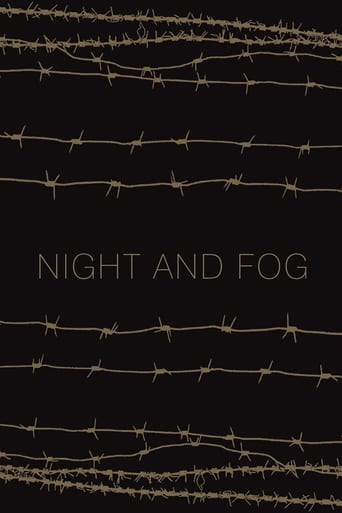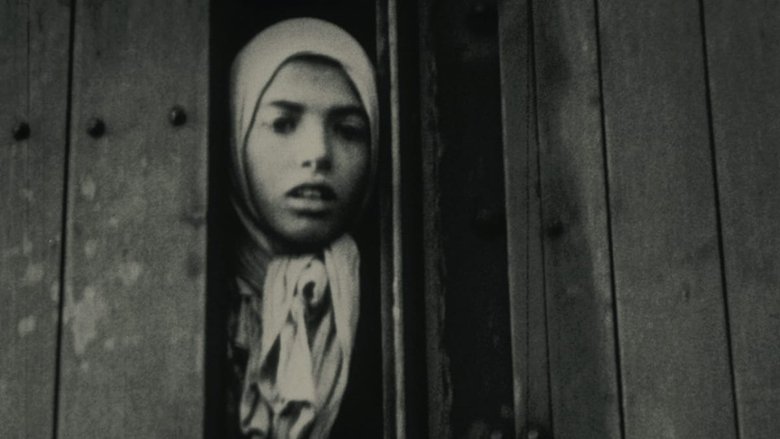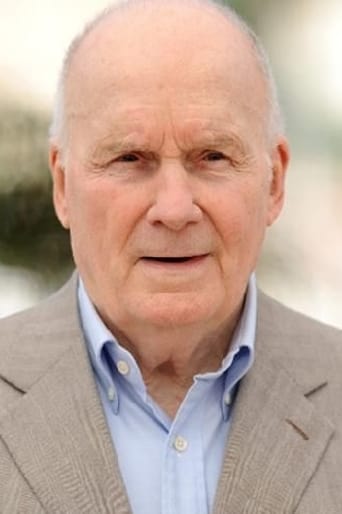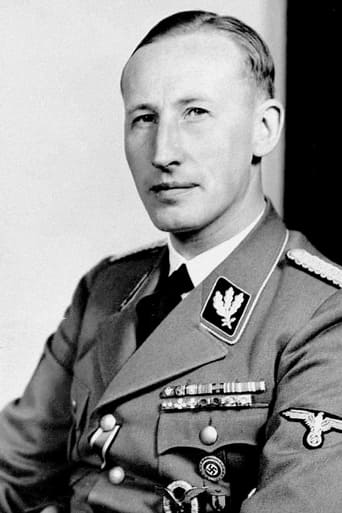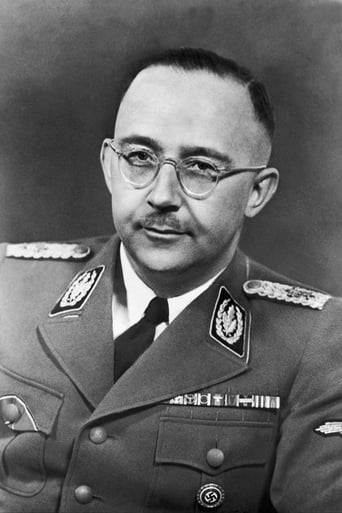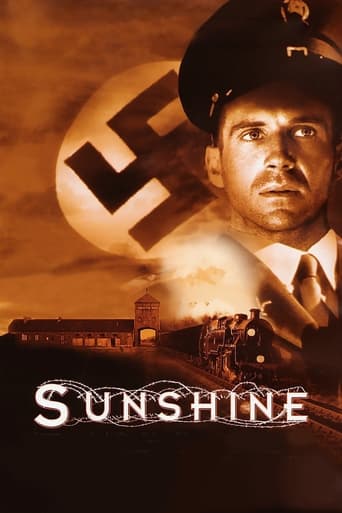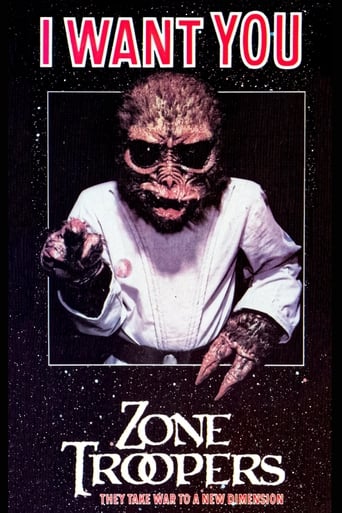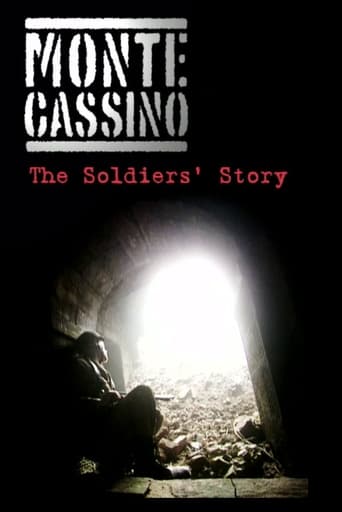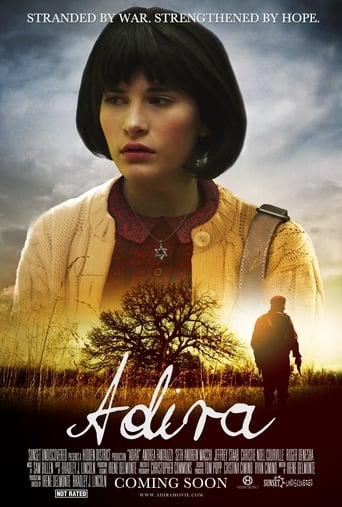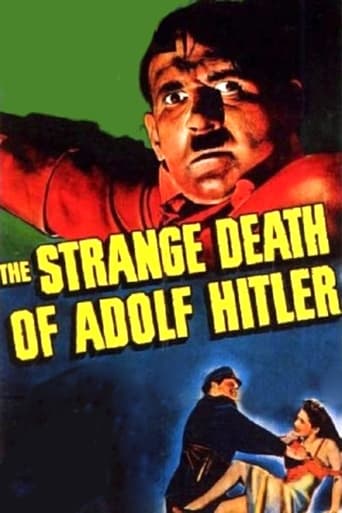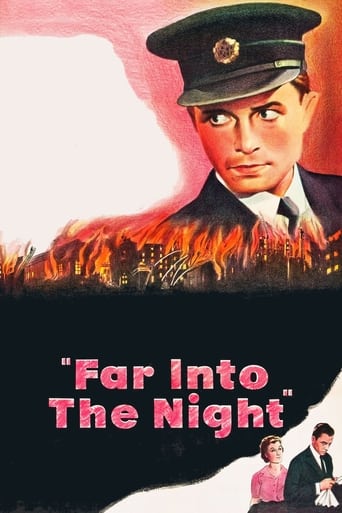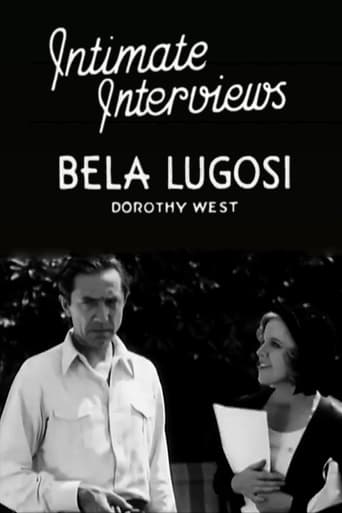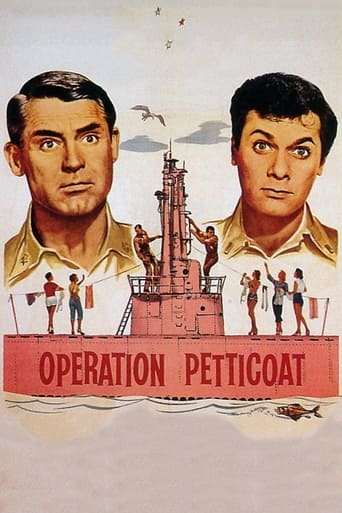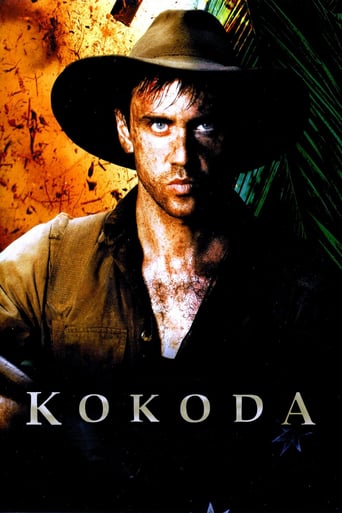Night and Fog (1956)
Filmmaker Alain Resnais documents the atrocities behind the walls of Hitler's concentration camps.
Watch Trailer
Cast


Similar titles
Reviews
Powerful
The film makes a home in your brain and the only cure is to see it again.
The movie's neither hopeful in contrived ways, nor hopeless in different contrived ways. Somehow it manages to be wonderful
The film never slows down or bores, plunging from one harrowing sequence to the next.
I think we all have a conception of the Holocaust. This conception has been created during our history classes, when we've been watching movies that have touched the subject, when we've been reading books and when our ancestors have been telling us stories about the Holocaust. Maybe have some of the movies we've been watching about the Holocaust given us a very glorified picture of what actually happened during the years of mass exterminations of Jews.But don't worry - if you haven't got a truthful picture of the Holocaust yet, Night and Fog definitely will give it. What I can see, this is the first war inspired documentary Alain Resnais has been directed. The atmospheric music - that all the time is interacting with the narrator - have been made by the musician Hanns Eisler, and fits perfectly in the film. But most impressive of all, is still the film art itself.You can't hide away from it. The camera moves slowly by extermination camps, high fences with barbed wire, rusty bunk beds in - otherwise empty - dorms and also by humans. The camera moves so slowly, so slowly, and even if you wan't to see it, you can't avoid to watch it. It's all in front of you, and the reality - that's so horrible that words even can't describe that - and that made this 32 minutes long documentary to the most truthful documentary that I ever have watched in this category.But, not to forget: this isn't only the most truthful and awful documentary about the Holocaust that I ever have watched - this is also the documentary with the most artistic beautiful scenes I ever have watched. And to sum up, these elements make the movie to a historical masterpiece worth watching.
The documentary seeks to capture the viewer's attention by displaying that glimpse of what went in German concentration camps. This historical footage used in this film made available due to the German's documentation of their key activities. The Germans were very detailed and methodical in their management of the concentration camps.The documentary mentions that the concentration camps seemed like another world. The film started out with beautiful scenery. Beautiful scenery like farm lands, meadows, roads, resort towns, and areas of harvest. These areas were mentioned in a positive manner and were in close proximity to the contrasting concentration camps.The concentration camps testified to Germany's compressed industrial history. The film mentions that Germany itself was like an industrial machine, an industrial machine that was high in production and in working order because of its government. The Germans running the concentration camps believed they were being modern, scientific, or even groundbreaking. The concentration camps were built in tune with the modern times. There were contractors assigned to build them to a certain specification or style. The buildings even had bids on them to be built. The camps were build ahead of time before the prisoners arrived. When it came time fore the prisoners to arrive they were transported in modern age trains and vehicles. The Germans pushed the limit with their science. They experimented with the Jewish prisoners by use of inhumane methods and treatments. Their justification for the experiments was purely for scientific discovery. However, in legitimate science, scientist would not try to back up their views based on a racial bias. This operation was purely self-financed by the German Nazis so any conduct was accepted. Work ethic is heavily implemented in the lives of the Jewish prisoners. The SS stressed to the prisoners that "work is the only means of freedom". However, freedom wasn't possible for the prisoners in reality. Violence was a corrective action used by the SS. In the film it was by the implementation of heavy order. There was uninterrupted fear among the prisoners because at any time they could have a spot check, punishment, or a trip of no return. The killing or punishment by hand was present in the camps, but was not efficient. The Germans implemented mass killing in which they used the crematorium or the gas chamber. The film Night and Fog depicts the mass killings as a seamless process. It was almost like it was nothing to the Nazi German soldiers.At the concentration camps there were no individuals. The camps were only about the collective and smaller groupings of that collective. There were groupings such as woman, children, criminals, the elderly, disabled, and other groups. Certain measures were even made to destroy and individualism that survived with the prisoners. Each prisoner had to wear a symbol to signify that they were a Jewish prisoner. This symbol classified the Jews as a collective in the camps. The prisoners were stripped of all their individual clothes. This was not only humiliating but it reduced the prisoners to objects of flesh and bone. The prisoners started to look alike and have a indeterminable age because they were mostly naked, skinny, and tired. The Germans for the most part destroyed the Jewish prisoner's individuality and culture. However, the Jewish prisoners did keep their faith and found ways to mentally escape their hardship. They wrote letters, created sculptures, or even reflected on scriptures. (There may be some spelling mistakes but I think I got my idea across)
This haunting film tears at our very essence. Narrated by a Holocaust survivor in a subdued, restrained voice, some of the most horrific images of inhumanity are presented matter-of-factly, having more impact than virtually any other cinematic presentation I've seen. I had a high school teacher who, himself, was in a German prison camp. After his own liberation, he had the experience of being part of the force that went into the death camps. He showed us pictures that I'm sure would have been seen as inappropriate for our young eyes. These images have stayed with me my whole life. I owe him a debt of gratitude for his courage in bringing us into his world. I think that this brief film probably did the same thing for people of that era. The films that have been put together, the still photos, and the insightful commentary have an enormous impact. Don't watch unless you have a strong stomach. The pictures tell the story and they pull no punches.
A movie i've seen in history class and i assumes it's very disturbing, mostly when you are only 12 years old. It's only thirty-two minutes but it's very shocking, it's unfortunately what happened. A voice-over without emotions will comment the movie, even this voice is uncomfortable. You can't forget a film like this, it's more powerful than a lesson about World War II. Alain Resnais made the only movie which make you think about the concentration camps and the Nazi Germany. If you never seen this film, you absolutely should watch it, it's maybe not for everyone but it's history.

